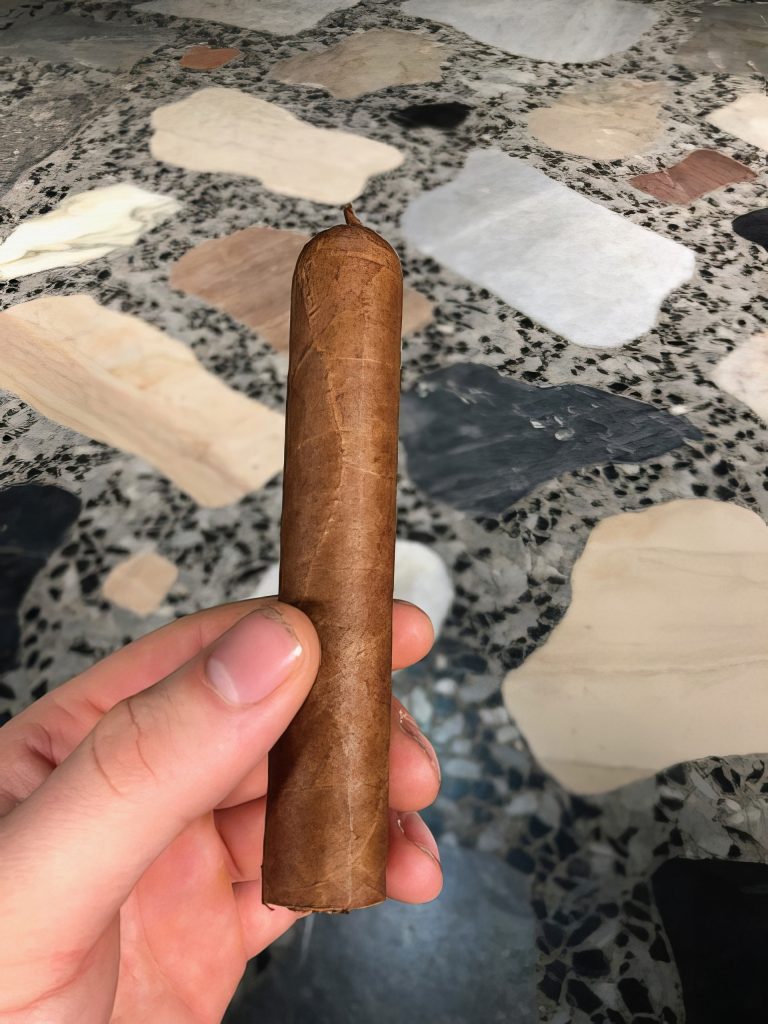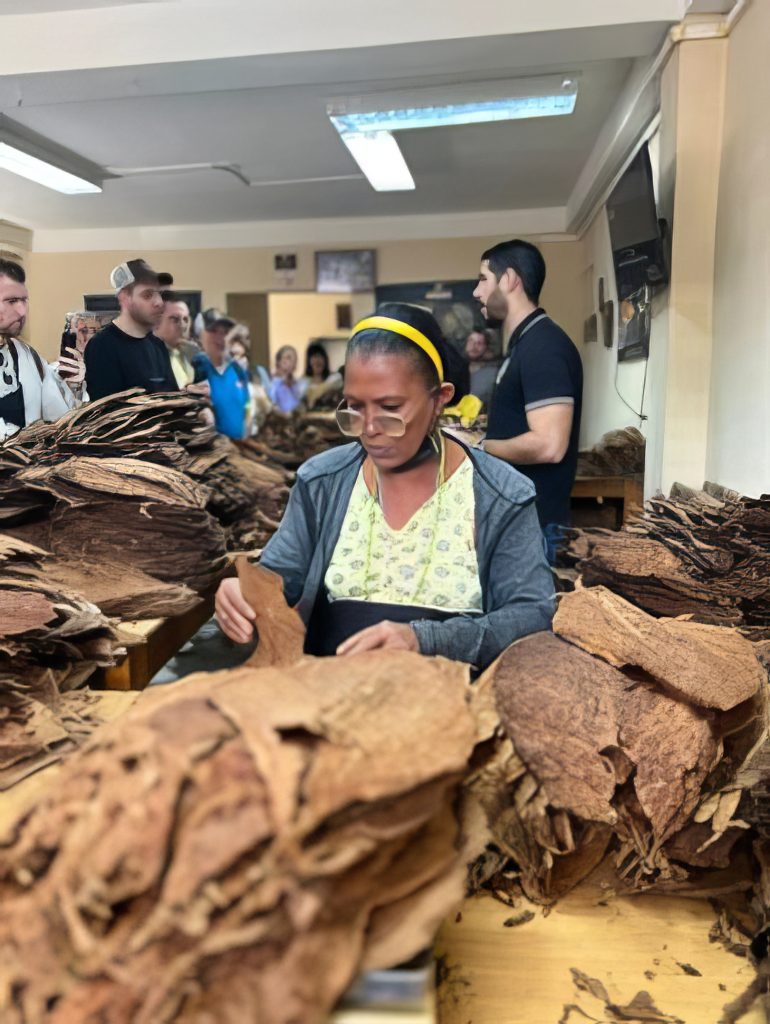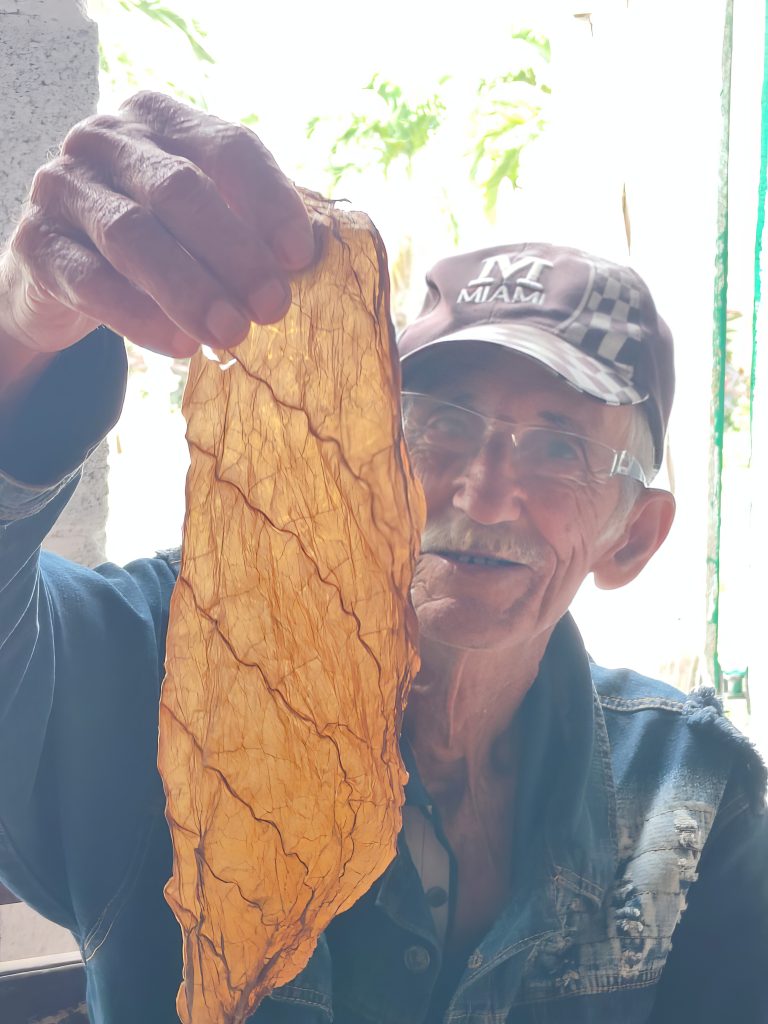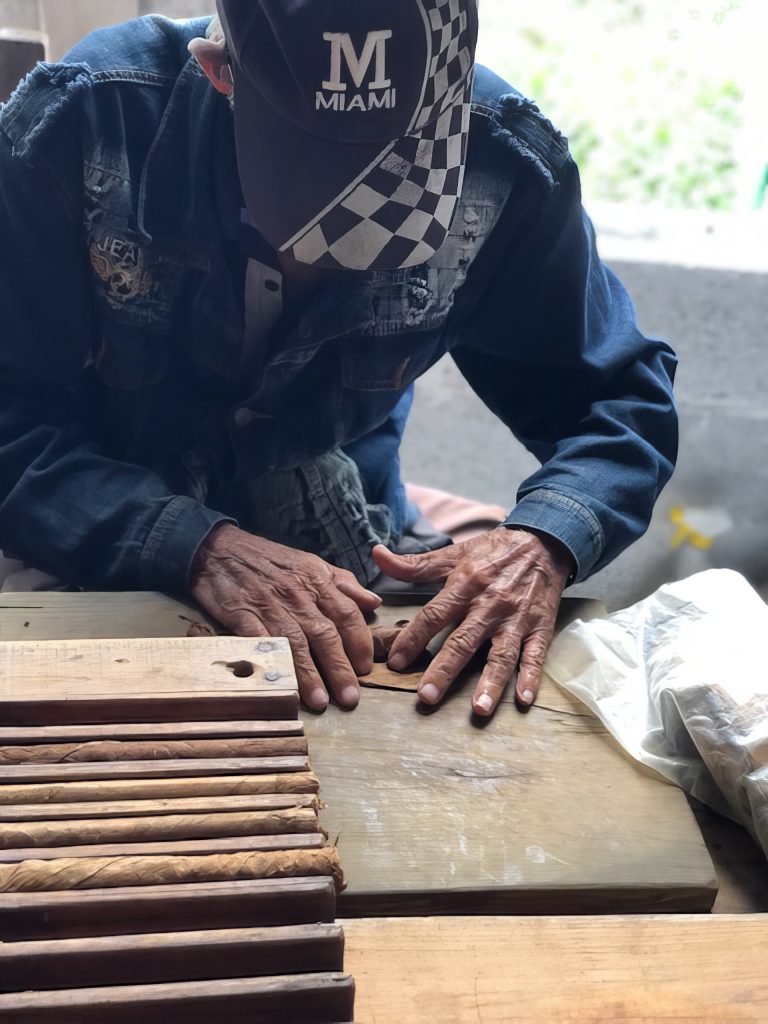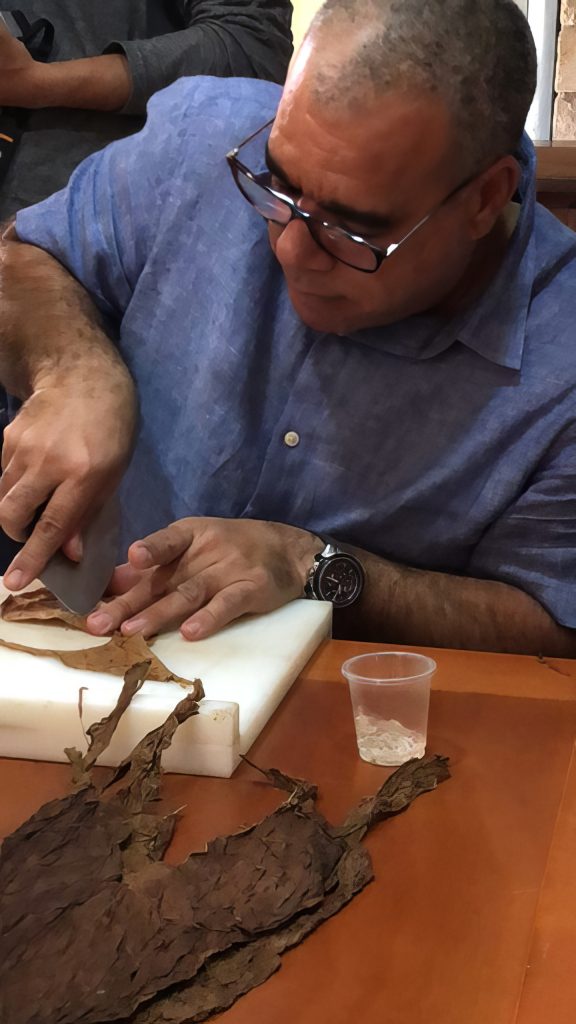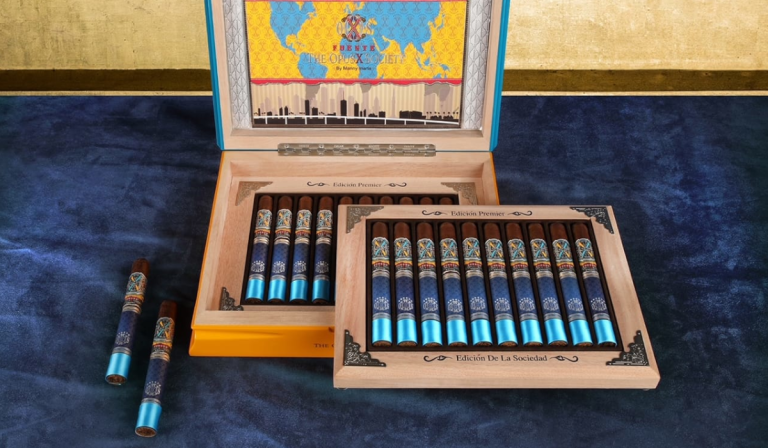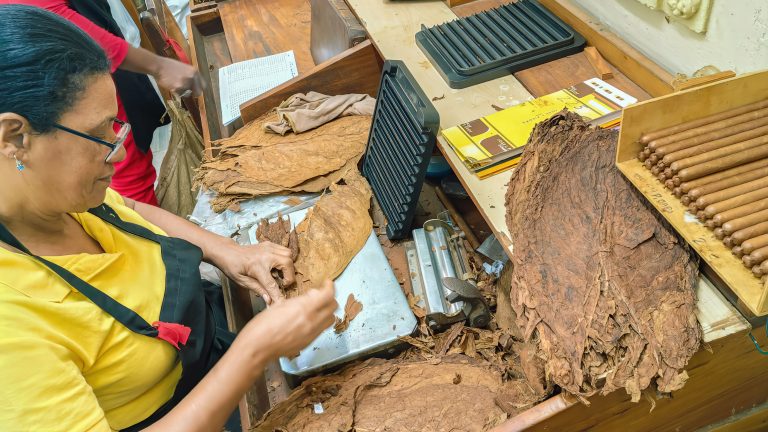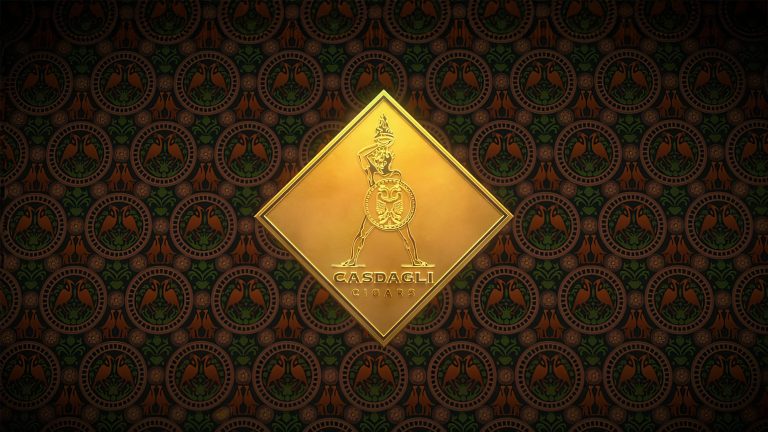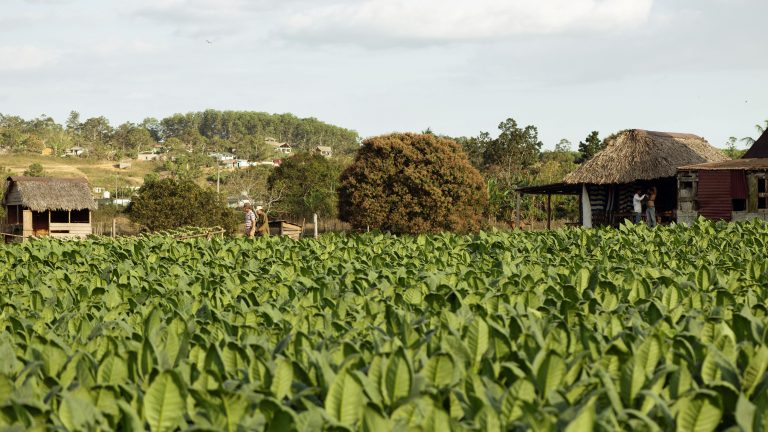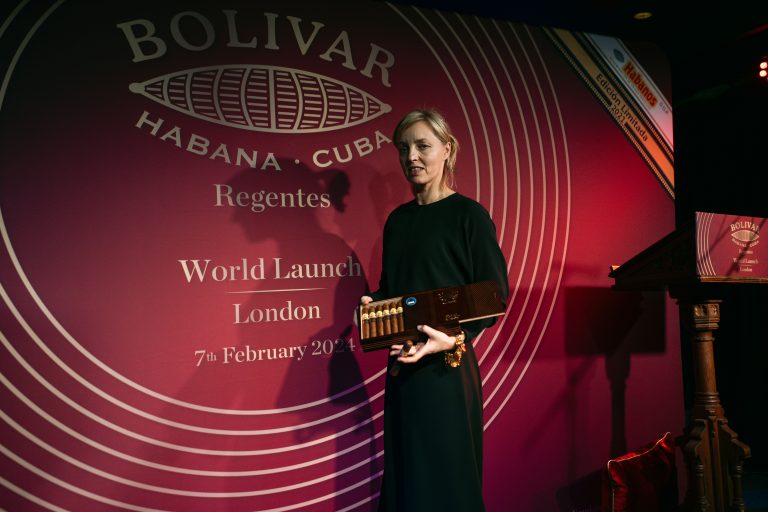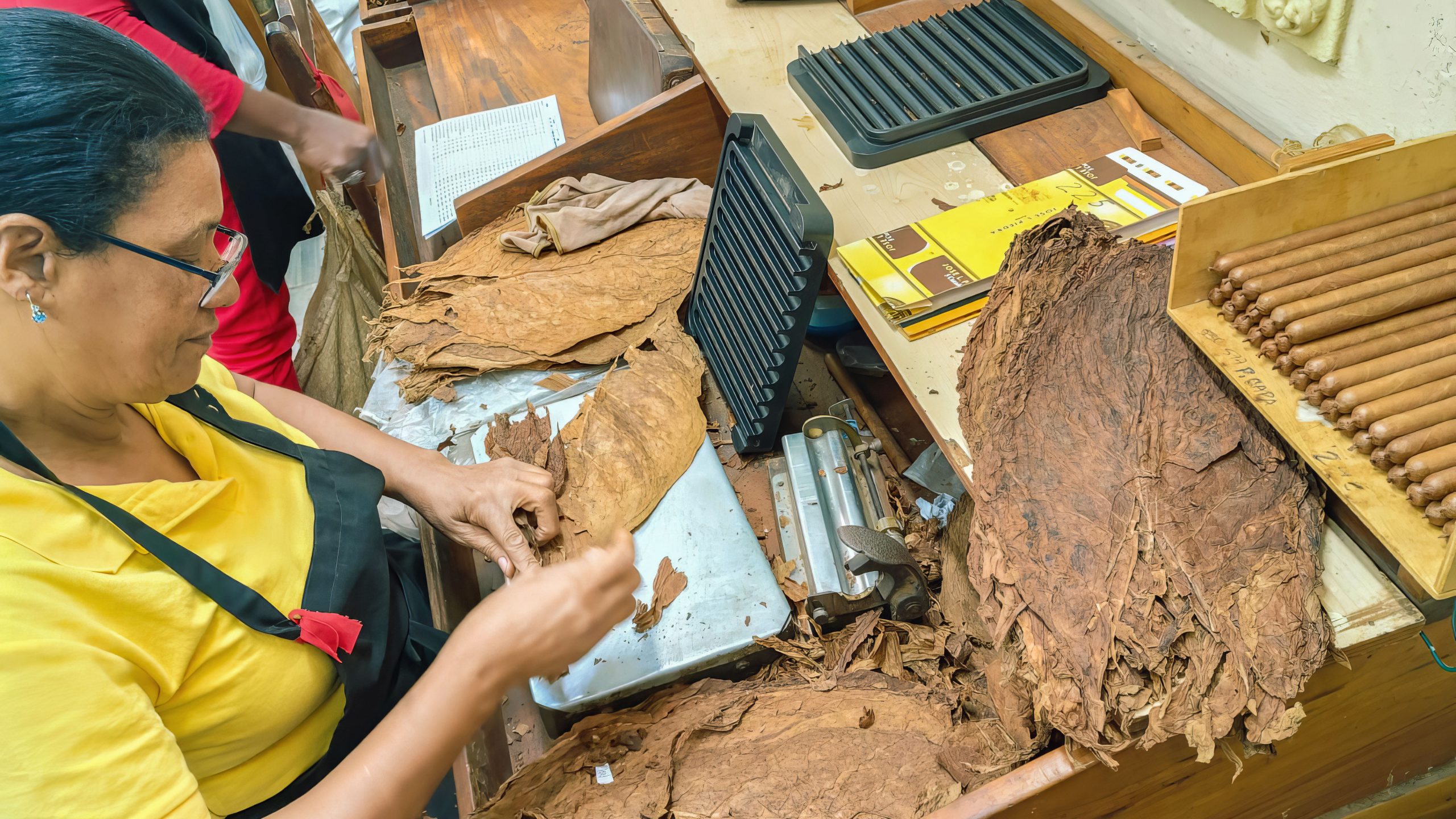
Cigar News
SpecialsMaster Cigar Roller Explains Common Mistakes in Cuban Cigar Rolling
Recently, I visited Havana’s Laguito 1492, where I toured and ended in a smoke lounge for a presentation by a top-level roller on perfect cigars and torcedero errors. This article explores common mistakes in cigar-making as shared by an expert.
The Perfect Cigar
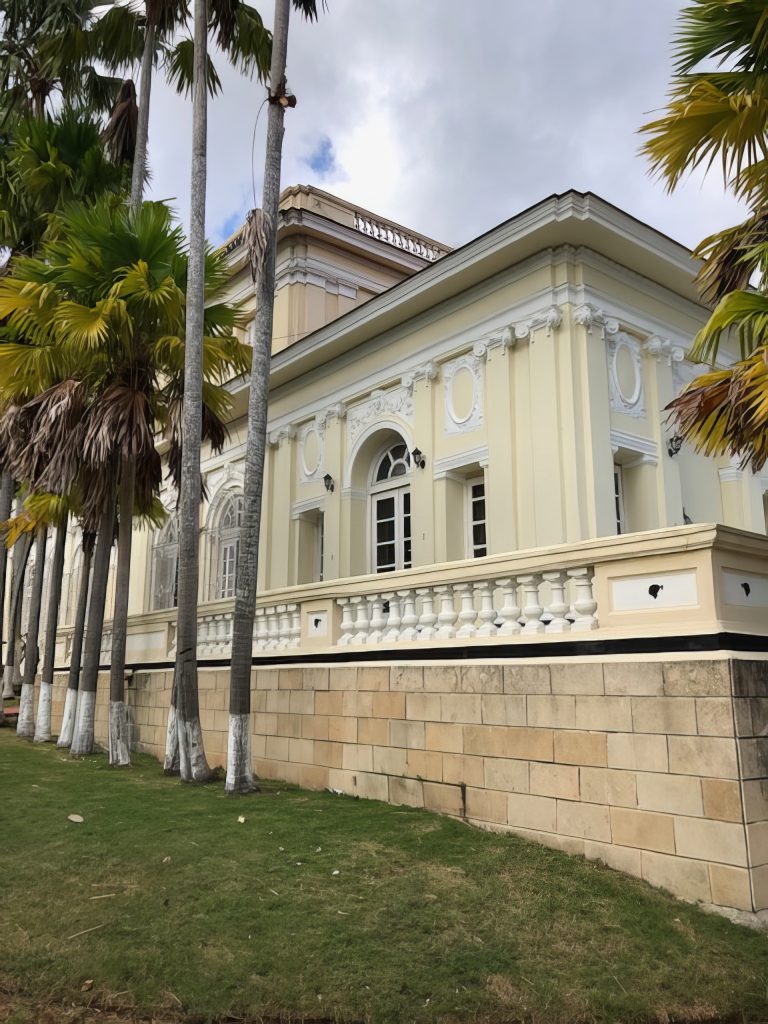
To understand how an imperfect cigar is created, we first need to know how a perfect cigar is made. The rollers are provided with the right viso, seco, ligero, binder, and wrappers to make the cigar. They start by making the trippa (filler). They take a viso leaf first, followed by the seco leaf and the ligero leaf. Viso leaves provide combustion for your cigar; this leaf burns faster than other leaves inside your cigar. The seco leaf provides the aroma, and the ligero leaf provides strength/body to your cigar. Once the torcederos put the filler leaf into their hands, they remove the extended part of the leaves at the bottom of their hands. A skilled cigar roller can now feel if the tobacco is spread out evenly in their hand. If needed, they fill up any part that they think is thinner than other parts with the remains they just removed. Once they are satisfied with the trippa, they firmly roll the trippa into a binder leaf. Then the almost finished cigar goes into a malt and then into a press for 30 minutes. Afterwards, they put the cigar in a draw machine to check if the airflow is between 40-80 percent. If the cigar is okay, they stretch out a wrapper leaf and roll the filler+binder into this leaf. It is important to check that the nerves of the wrapper leaves are pointed upwards, so the finished product has a smooth feeling. In the end, the torcederos apply a bit of maple glue and apply the cap at the end. And there you have it, the perfect cigar.
The Imperfect Cigar
The feeling every cigar smoker experiences more than they want to, a bad draw, uneven burn, the cigar burns too quickly, the cigar tastes too strong, …. I will now tell you about the most common mistakes that are made in the process of rolling a cigar. Please keep in mind that rolling cigars is a difficult process completely done by hand. It takes years of training and practice to stop making these mistakes, and even then, it’s still possible.
Mistakes in the Trippa
Let’s start at the beginning of rolling a cigar. Like I mentioned, the trippa is made by putting a viso, seco, and ligero leaf into your hand. A few mistakes can happen when preparing the trippa:
Not Enough Tobacco
When the torcedero fills their hand up with the viso, seco, and ligero leaf, they feel if the tobacco is spread out evenly. They remove the bottom part of the leaves, and here you have two possible mistakes that can occur.
Mistake 1: They think the tobacco is spread out evenly and miss parts that have not enough tobacco. This mistake leads to an uneven burn, a different taste than you’re used to, and the cigar will burn up faster.
Mistake 2: They feel that there are gaps with not enough tobacco, and they put too much inside these gaps. When too much tobacco is in one place of your cigar, it will create a bad draw. The cigar will start clogging up, and you end up with a bad experience. In this mistake, another mistake can happen. If the torcedero fills up the gaps with only parts of a viso leaf (combustion), the cigar will start burning faster on one side; if he fills it up with ligero leaves, it will taste too strong, and the blend will taste different.
Rolling the Trippa Too Tight
This is a mistake often seen by new torcederos that don’t have a lot of experience. When they hold the trippa too firmly in their hand, the sensitivity gets lost. The roller will start filling up the trippa because they will feel more gaps. The result is simple: too much trippa that needs to be rolled into the binder so the blend will be too tight. After this cigar has been in a malt and the press, it will fail to pass the draw machine or even worse, the cigar doesn’t get selected for testing, and you may end up buying this clogged-up cigar with little to no airflow.
Applying the Binder
This step sounds easy, just roll the trippa into the binder leaf, apply a bit of glue at the end, and we’re done. However, applying a binder leaf is more difficult than you think. A common mistake made in this process is turning the leaf upside down so that the nerves are facing downwards. The result is that applying a wrapper is very difficult and that the end result is a vainly smoke. The second mistake that can happen is when the torcedero forgets to stretch out their binder. The result will be that the binder is thicker in some places than in others, and you end up with “dents” in your cigar. Another mistake is rolling the binder too loose or too tight around the trippa. Both mistakes will affect your draw. The last mistake that can happen is at the end of adding the binder. One of the tools that a torcedero needs to make cigars is a “chavette”; you can compare this tool with a knife in the shape of half a circle. They use this tool to cut away the extended leaves and also to process the wrapper leave. After the binder is added, the torcedero needs to remove the extended part so that the cigar fits in the malt. If they don’t cut it perfectly straight, this will affect the last step of the cigar, adding the cap. When a crooked cut is made and afterwards the cap is added, you will see that the cigar is crooked, and if you cut the cigar, chances are that you will cut too deep, resulting in the unravelment of your wrapper leaf.
Wrapper Time
Wrapper leaves are the thinnest leaves used in a cigar. In the article about Finca Hector Luis, I go into more detail about the different leaves used in a cigar. The wrapper is thinner because it’s a shade-grown leaf. Therefore, this leaf is more elastic, and the torcedero can process this more easily. The nerve of this leaf is removed by the torcedero himself. The rest of the leaves are already stripped upon arrival at his table.
Common Mistakes with Wrappers
The Leaf is too Small
Let’s say we’re making a behike 56 size cigar. Due to its big ring size and length, you can imagine that a lot of wrapper leaf is needed. If the torcedero strips a wrapper leaf, they need to use it because these are the most expensive leaves; well, suppose that they chose too small of a leaf this time. What will happen is that near the end of the cigar, they will have too little wrapper, and they need to cheat a bit. Most rollers will start a second wrapper leaf; therefore, maple glue is applied to glue the two wrappers together and then continue towards the end of the cigar. The result is that once the cigar reaches the point of burning where the leaves are glued together, the wrapper leaves will crop up, and this part will burn slower than the other side, so you end up with an uneven burn, and you need to retouch this side.
The leaf is upside down: When the cigar roller doesn’t pay enough attention, a quick mistake can occur when they place the wrapper leaf ready on their table. By simply using the leaf upside down, so that the nerves are facing downwards, you will end up with a rough cigar. Normally, the vein of the leaf needs to point upwards so that the most beautiful and smooth part of the leaf will be the part that you can see.
Another mistake can be found in the preparation of the wrapper leaf. The cigar roller needs to cut the wrapper leaf to remove the side part and the nerve. When they cut too far from the edge, the strength of the leaf will be compromised, and you can end up with a cigar that starts cracking once it’s lit. Most of the time the strength of the secondary vein fails and the wrapper leaf will start cracking up here.
The last mistake that can happen in the preparation of the wrapper leaf is forgetting to stretch out the wrapper. If this essential step is forgotten, it will end up the same way as when you forget to stretch the binder leaf and you will end up with an ugly cigar. Stretching out the wrapper leaf in a correct way ensures a nice tight smooth cigar that looks appealing to smoke.
Another common mistake is at the end of the process of making a cigar. Let’s say that the roller made a perfect cigar till this point. In the end, a cap needs to be added to close your cigar (the cap is the part where you cut the cigar). To add the cap, the torcedero needs to punch a hole in a wrapper leaf or use their chavette to cut out a small piece of leaf that they can use. Depending on which cigar they are making, they will choose which tool they use to get the cap. When they add the cap, they first need to open up the binder a bit so that the cap can be put inside, apply a bit of glue, and then close it up. This would be the correct way, but sometimes the torcedero forgets to open up the binder, and they just glue the piece of leaf (cap) onto the outside of your cigar. The result would be that when you cut the cigar, the cap will be completely removed or even worse, when it’s glued pretty tight onto your wrapper and you cut your cigar, you can destroy your wrapper and your cigar can start to unfold itself.
Final Thoughts
Next time when you smoke a cigar that is perfect in every way, appreciate it a bit more. Rolling the perfect smoke is a skill that gets acquired after years and years of experience. The pace that the cigar rollers have is incredibly fast since they get paid for each cigar that they deliver. I have the most respect for this profession. The rollers don’t make big dollars working in the factories, but every single employee works with a big smile on their face. The Cubans are proud of their product, and they love to show it to you. So next time when you have an imperfect smoke, you know where the problem comes from!
Article by: Lukas Magdeleyns
Latest from Specials ...
March 2024
March 2024
March 2024
February 2024
February 2024

